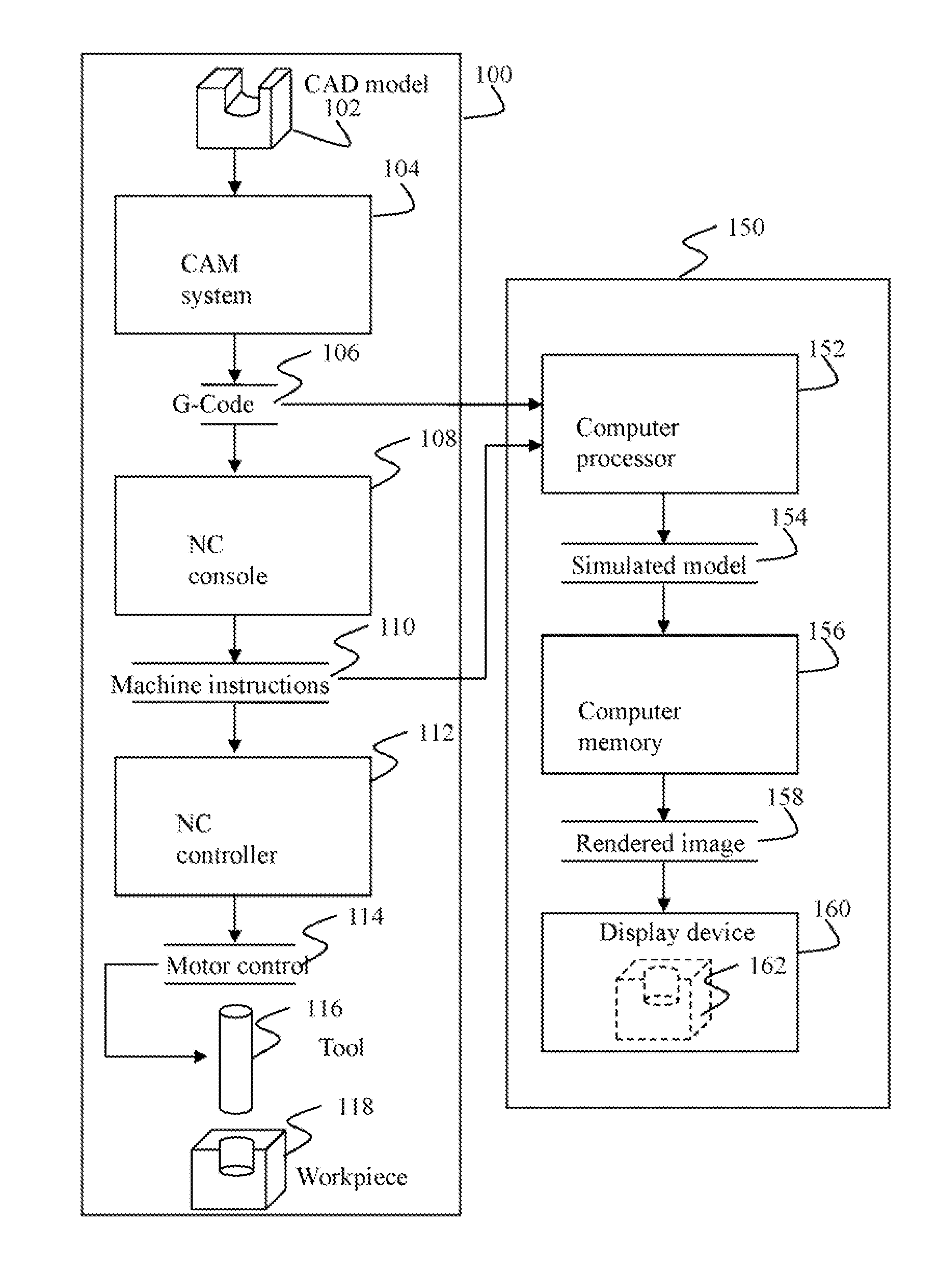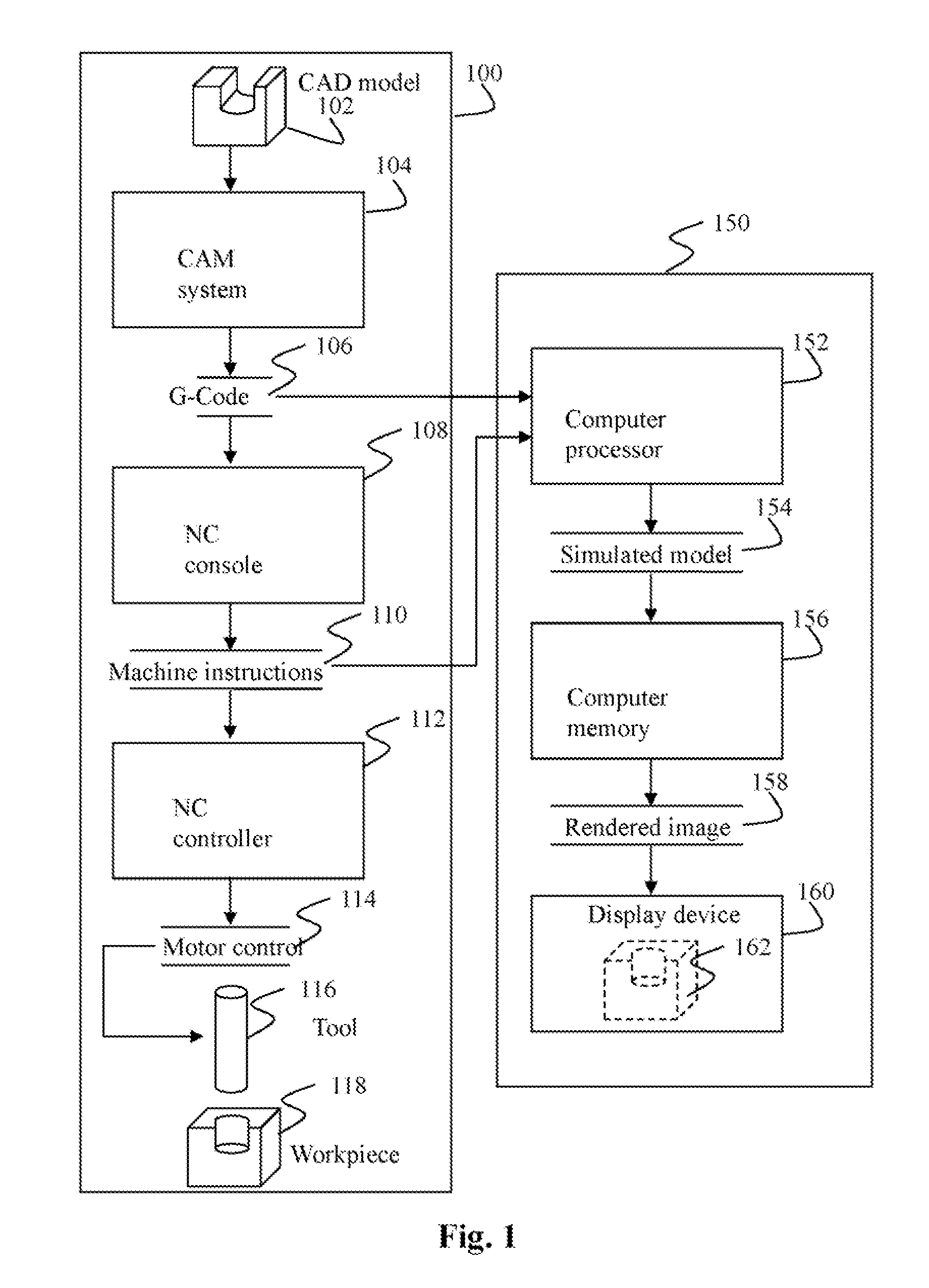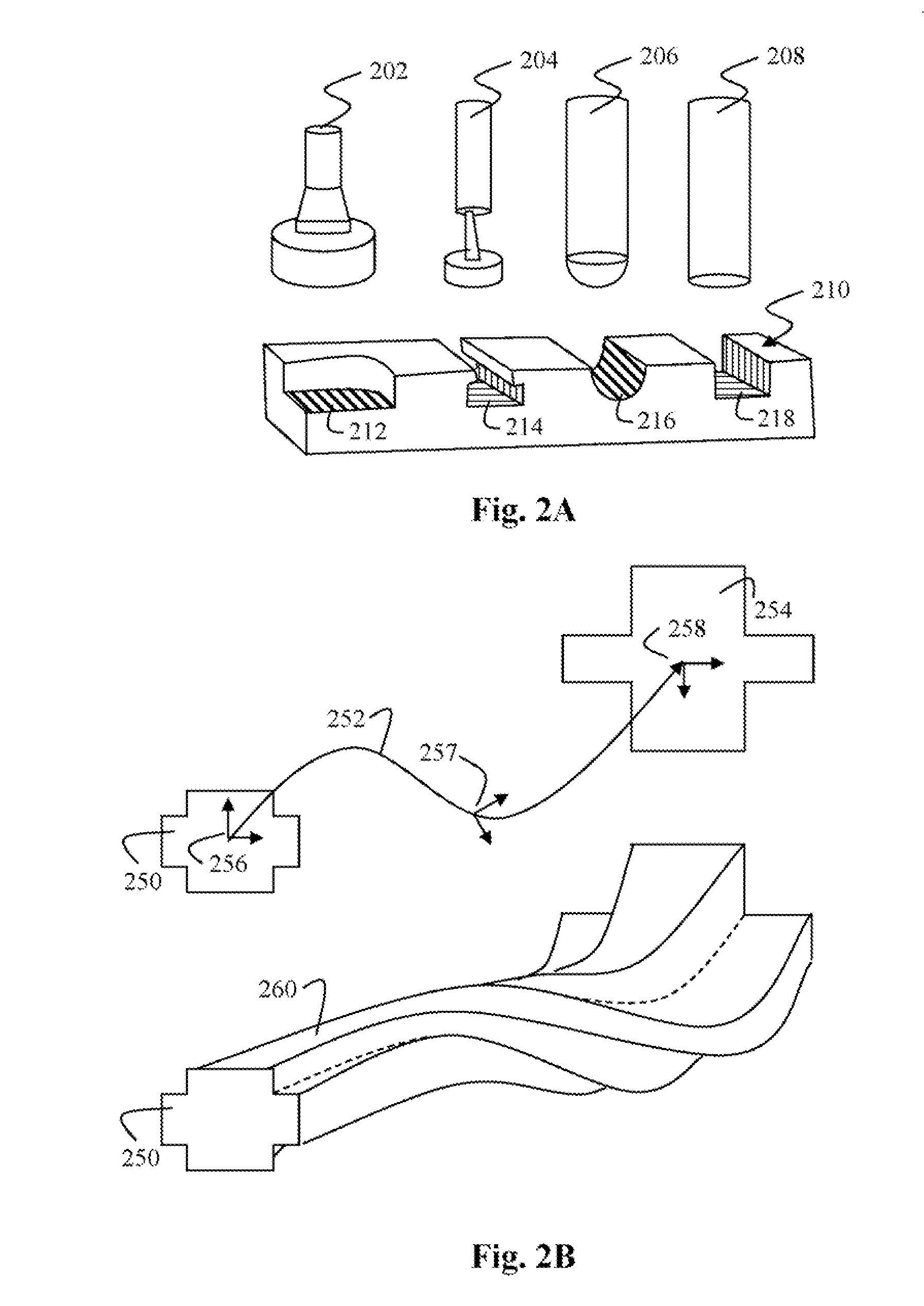System and Method for Analyzing Engagement Surfaces Between Tools and Workpieces During Machining Simulation
a technology of engagement surfaces and workpieces, applied in the field of engagement surfaces, can solve problems such as difficult task of determining engagement surfaces, and achieve the effect of high precision angles of engagemen
- Summary
- Abstract
- Description
- Claims
- Application Information
AI Technical Summary
Benefits of technology
Problems solved by technology
Method used
Image
Examples
Embodiment Construction
[0071]System and Method Overview
[0072]FIG. 1 shows an NC milling system 100, and a numerically controlled (NC) milling simulation system 150. In the NC milling system 100, a computer aided design (CAD) model 102 is input to a computer aided manufacturing (CAM) system 104, which generates G-Codes 106 for controlling an NC milling machine. During NC milling, the G-Codes are input to an NC milling input interface 108, which processes each G-Code to produce a corresponding set of NC machine instructions 110. The NC machine instructions are input into an NC controller 112, which produces a set of motor control signals 114 to move a tool 116 relative to a workpiece 118 in order to mill the workpiece.
[0073]The simulation system 150 can take as input either the G-Codes 106 generated by the computer aided manufacturing system 104, or the NC machine instructions 110 generated by the NC console 108. The input to the simulation system is read by a computer processor 152, which simulates machini...
PUM
 Login to View More
Login to View More Abstract
Description
Claims
Application Information
 Login to View More
Login to View More - R&D
- Intellectual Property
- Life Sciences
- Materials
- Tech Scout
- Unparalleled Data Quality
- Higher Quality Content
- 60% Fewer Hallucinations
Browse by: Latest US Patents, China's latest patents, Technical Efficacy Thesaurus, Application Domain, Technology Topic, Popular Technical Reports.
© 2025 PatSnap. All rights reserved.Legal|Privacy policy|Modern Slavery Act Transparency Statement|Sitemap|About US| Contact US: help@patsnap.com



